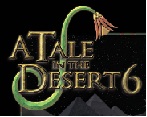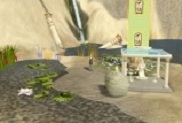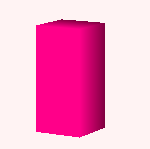The Wiki for Tale 6 is in read-only mode and is available for archival and reference purposes only. Please visit the current Tale 11 Wiki in the meantime.
If you have any issues with this Wiki, please post in #wiki-editing on Discord or contact Brad in-game.
Agent mutagène
| English | Deutsch | français | magyar | Türkçe |
 |
Page Principale | Bâtiments | Ressources | Guides | Epreuves | Compétences | Technologies | Cueillette |  |
![]()
(NdSebilis: Page à traduire, avis aux expertes :) )
- En cours de traduction
Les Agents mutagènes
voir aussi Genetics for Dummies.
Mutagène est recherchable après Chimie avancée 1, Soufflerie avancée, Viticulture et Jardinage -> Greffes, Herbiculture.
Alerte mousse manquante pour mutagène
Positives: Negatives:
Note: Une mousse mutagène DOIT avoir tous les attributs positifs visés. La mousse ne peut pas avoir l'un des trois attributs négatifs énumérés. Il peut aussi avoir d'autres attributs ainsi que les attributs positifs.
Exemple:
Attributs positive Mousse : Hairy, Mottled, Striped
Attributs négative Mousse : Calico, Spongy, Spotted
Une bonne mousse pourrait être : Dry, Hairy, Mottled, Striped or Hairy, Fuzzy, Mottled, Reticulated, Striped.
Une mauvaise mousse serait : Hairy, Mottled (il manque Striped) ou Hairy, Mottled, Spotted, Striped (il ne devrait pas avoir la négative Vous avez trouvé en elle).
Qu'Est-ce qu'un Mutagène ?
Un mutagène est une goutte de sécrétion créé par une recette dans un Laboratoire à mutagenèse.
La recette et les ingrédients s'apparente à une recette dans une cuisine.
Un Laboratoire à mutagenèse continuera à sécréter des gouttelettes de mutagène d'une recette pendant environ 30 jours à un taux d'environ 9 gouttes par jour réel de la vie.
Le Laboratoire à mutagenèse ne peut être arrêté ou utilisé pour une autre recette mutagène au cours de cette période.
Comment appliquer/utiliser un Mutagène
Un mutagène est appliquée aux plantes "Splint" gauche et droite dans une Serre. Le mutagène passe un gène de la plante de gauche "Splint" avec un gène de la plante attelle droite. Il peut être utilisé sur n'importe quelle plante dont le génome - Nénuphars, Roses de Ra, Orchidées, Fleur des sables, de Lin, de Blé, vin.
Un mutagène est appliquée aux plantes "Splint" gauche et droite dans une Serre. L'agent mutagène passe un gène situé à m% du génome de la plante gauche "Splint" avec un gène situé à n% du génome de la plante Droite "Splint".
Deux bébé plantes sont produits. Le "Splint" du bébé plante avec le nombre le plus faible conserve le même génome exacte de la mère dans "Splint" à gauche, sauf pour le gène activé, et Le "Splint" du bébé plante avec le nombre le plus grand nombre conserve le génome exact du parent dans "Splint" droite, sauf pour la commutation génique.
Ceci est en contraste de Greffes avec l'Essence de noix, où une partie de la partie gauche du génome de la plante "Splint" gauche est tranchée sur une section de la partie droite du génome de la plante "Splint" droite et produit une seule bulbe de l'enfant.
When applying a mutagen to a hybrid of your own you can calculate the switched genes by using the Left and Right Splint minimum and maximum percentages listed on Mutagen Tables for Genome Builds. The minimum and maximum percentages lead to a range of gene positions in which the actual switched gene resides. Tests narrow this range to improve the accuracy of the identification of the switched gene in any given genome. You will need to follow these directions with both the Left Splint and Right Splint. To use these directions you must know your plant's genome exactly which can be found by using solvents. Note that the genome length NEVER includes the 'K' or Black gene at the front and end of the plant genome.
Info des Avancées Mutagène
To figure the minimum and maximum range gene positions of the Left Splint genome:
- Multiply the Left Splint genome plant length by the Left Splint minimum percentage listed. Round this figure down. Add 1 to the last figure. This is the leftmost possible gene position of the switched gene from the Left Splint plant genome.
- Multiply the Left Splint genome plant length by the Left Splint maximum percentage listed. Round this figure up. This is the rightmost possible gene position of the switched gene from the Left Splint plant genome.
- You now know the RANGE of genes that the switched gene position is in for the Left Splint genome.
Repeat the above EXCEPT replace the words 'Left Splint' with 'Right Splint' to know the RANGE of genes that the switched gene position in the Right Splint plant.
In formula form: Lowest possible gene sequence number = [Round down(genome length * min %)] + 1 Highest possible gene sequence number = [Round up(genome length * max %)]
Example
(See the Genomes page for genome info) In the greenhouse, a Vampire Sea Lily is put in the Left Splint, and a Fracture Sea Lily is put in the Right Splint. A theoretical Crackly, Spongy and Striped mutagen is applied. The mutagen switches the bolded genes Y and G in the following way:
Crackly, Spongy and Striped might switch the gene located at 10% to 12% on the Left Splint with the gene located at 63% to 66% on the Right Splint. By different methods you can eventually narrow down the exact gene location to the theoretical example below. (Those methods will be outlined later in an advanced guide).
Left Splint--> IYIYIOIYIOIO (Vampire genome)
Right Splint--> ROYGROYGYORGORGOOO (Fracture genome)
Two child bulbs result:
[avatar name] #1 IGIYIOIYIOIO
[avatar name] #2 ROYGROYGYORYORGOOO
Note: In practice, we do not know the exact percentages that a mutagen will hit.
Second Example (Advanced)
Example 1 (Range % determination)
- we put a plant with length 30 genome in left splint
- we put a plant with length 20 genome in the right splint
- we apply a mutagen with left percentages 10.02-11.52 and right percentages 53.11-55.30
- targeted gene calculation
- left splint lowest possible impact 10.02 * 30 / 100 = 3.006, + 1 and rounded down --> 4
- left splint highest possible impact 11.52 * 30 / 100 = 3.456, rounded up --> 4
- right splint lowest possible impact 53.11 * 20 / 100 = 10.622, + 1 and rounded down --> 11
- right splint highest possible impact 55.30 * 20 / 100 = 11.060, rounded up --> 12
- so the mutagen will target the 4th gene of the left splint plant and the 11th or 12th gene of the right splint plant (looking at the numbers shows a higher probability to hit the 11th)
- we proceed with the experiment and hope to hit the 11th
- we are lucky and hit the 11th !!!
- this means we can narrow down the Right Splint's right target zone max. % as follows: 11/20 = 55.000 % (round down for min. %, round up for max. %)
Example 2 (planning for a correct hit)
- we want to hit (= replace) the 7th gene of a length 27 genome
- target min. % = (7-1) * 100 / 27 = 22.222
- target max. % = 7 * 100 / 27 = 25.926
- we look at the mutagen table and sort the table on Left target min. %
- mutagens with Left min. % >= 22.222 and Left max. % <= 25.926 are candidates to be goodies
- for each goodie, look at the possibilities of hits with the Right target values for the plants you have available for the Right Splint, you will likely find a plant with the gene you want in the perfect spot, especially when using short genomes
- if no goodies found yet (or if you are brave enough to look for other solutions) look at the mutagen table and sort the table on Right target min. %
- mutagens with Right min. % >= 22.222 and Right max. % <= 25.926 are candidates to be goodies
- for each goodie, look at the possibilities of hits with the Left target values for the plants you have available for the Left Splint, you will likely find a plant with the gene you want in the perfect spot, especially when using short genomes
Mutagen Recipes
see Mutagen Research and Recipes page!
